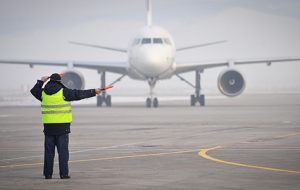Passport Required for Domestic Flights [2023]
Updated As of read 3 min

If you’re a legal resident of the United States, you may be under the assumption that you do NOT need a passport to travel so long as you have no plans on actually leaving the country. In the past, you would be absolutely correct, but as of 2023, you’re going to want to double-check things before you head off to the airport. After an extension of The Real ID Act expired on October 10, 2017, residents in some states may need a passport to travel – regardless of whether or not they’re taking an international trip – as of January 22, 2018.
The Real ID Act: What Is Going On?
The Real ID Act of 2005 is a piece of legislation that insisted that state-issued IDs and similar forms of identification are more than adequate to meet the minimum security standards now set by the United States federal government. The problem is that the act had an extension that expired on October 10, 2017, meaning that it is no longer valid and could pose significant travel issues depending on where you live and where you might be headed.
What Documents Do I Need to Fly Within the U.S.?
Now that the Real ID Act has expired, certain state residents may need a valid United States passport to fly domestically. This includes those residing in Illinois, Missouri, New Mexico, and Washington, as these are all states which did not meet the security requirements set by the federal government. If you’re a resident of one of these four states (or if you’re unsure), it is highly recommended that you obtain a valid U.S. passport prior to any travel.
For residents of other states, the federal government recommends carrying proof of ID such as a driver’s license or state-issued ID card when flying domestically; however, having a passport is always the safest option and may be necessary for specific flights. You must check with your airline before traveling and ensure you have the required documents.
In addition to carrying proof of identification when flying domestically, a valid U.S. passport is also required for international travel. Depending on where you’re going, certain countries may have specific visa requirements that must be fulfilled to enter the country legally, so it’s essential to check with both the U.S. Department of State and the embassy or consulate of the country you’re visiting before any travel.
Related Read: Do You Need a Passport o Fly Domestic?
The TSA Security Checkpoint
In order to get past a TSA security checkpoint at an airport in any of these states, another form of identification will likely be required beyond your state-issued ID. This means you’ll need a passport, a permanent resident/green card, or a valid military ID. This is true for ANY commercial flight that you may be taking.
Equally important to note is that all of this information could change at any moment. But suppose things stay the way they are right now. In that case, you will need a passport or similar form of identification to take any commercial flight – whether international or domestic – when the current grace period expires on January 22, 2018. If you do not have a valid United States passport, now would be an excellent time to resolve this issue.
On the subject of getting your passport, it’s important that you have several viable options for getting your document in your possession as quickly as possible. Expedited passport services are likely available in your area that can collect and submit all necessary documents on your behalf, cutting the processing time down from the standard six to eight weeks (or longer, depending on the time of year) to 24 to 48 hours depending on where in the country you currently live.
Related Read: Can a Convicted Felon Get a Passport?
Conclusion
Ultimately, it’s important to take action to ensure you have a valid United States passport in your possession before the current grace period expires on January 22, 2018. With expedited services available, several options exist for obtaining a passport quickly and efficiently. Once you’ve taken care of this necessary step, you can then focus on making travel plans with the peace of mind that a valid passport will provide.
For those who have additional questions about the United States Passport Help Guide or need assistance with obtaining a passport, our helpful customer service team is here to answer any inquiries you may have. We are available by phone or email and can help guide you through the process of getting your passport quickly and efficiently.



